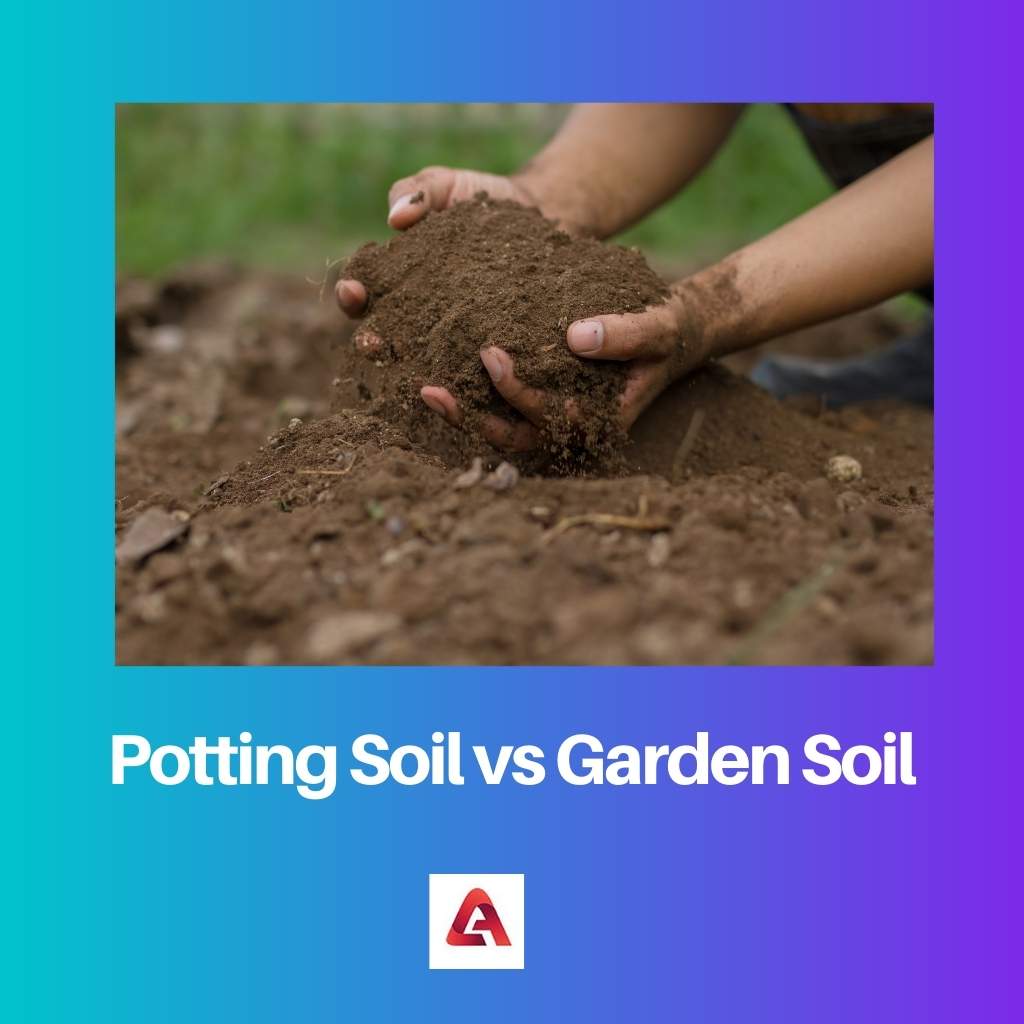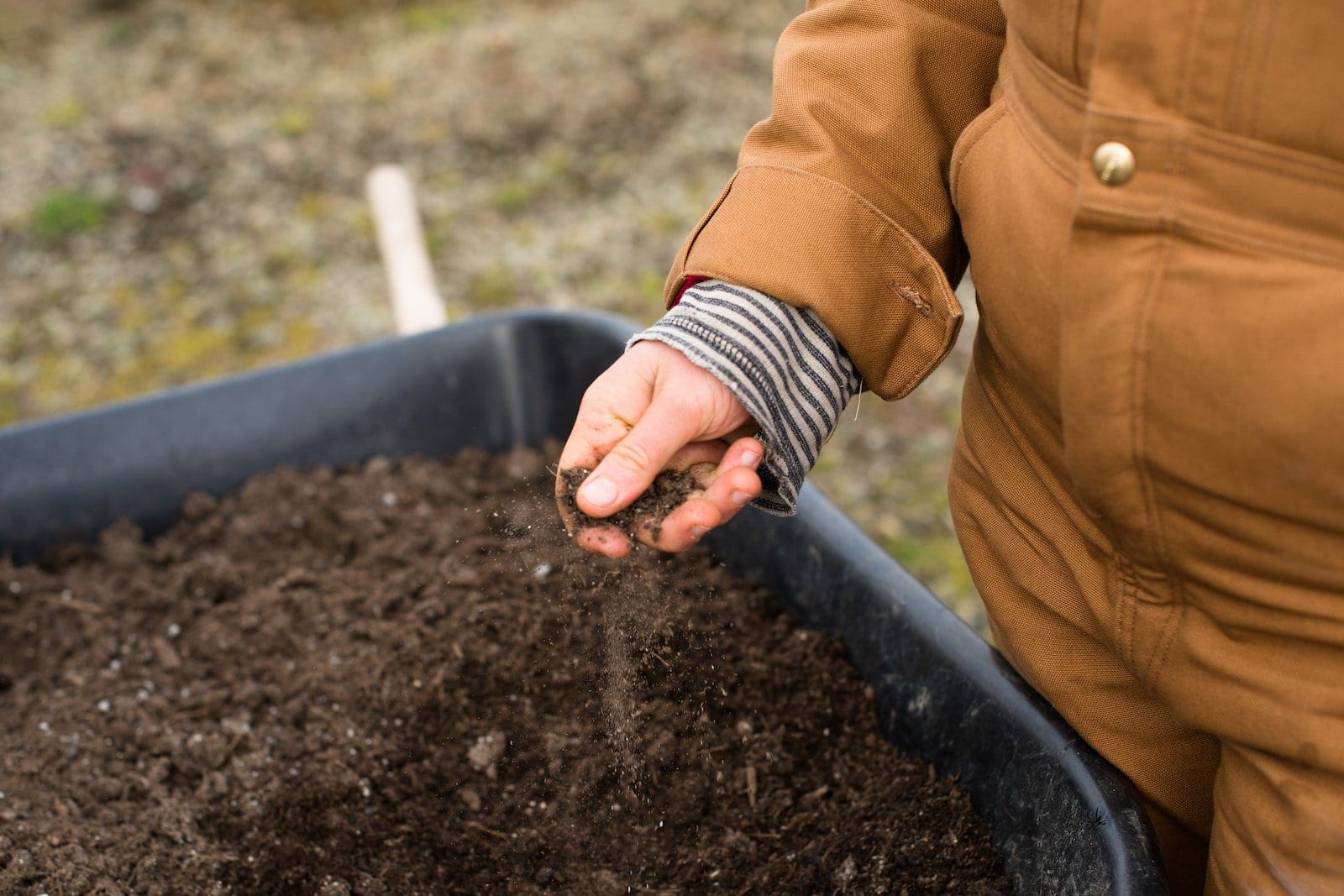On the off chance that you’ve at any point considered what’s the distinction between potting soil and garden soil, the appropriate response isn’t pretty much as direct as you may suspect. The expressions “garden soil” and “Potting Soil” are regularly utilized conversely.
However, there are unmistakable contrasts between them. While garden soil contrasts depending on your district or environment, all Potting Soils share the normal qualities of being lightweight and sterile.
Key Takeaways
- Potting soil is a lightweight, nutrient-rich mix designed for container plants.
- Garden soil is denser, has varying nutrient levels, and is intended for in-ground use.
- Potting soil provides better drainage and aeration, while garden soil is better for water retention.
Potting Soil vs Garden Soil
Potting soil, also known as potting mix, is a specially formulated soil mixture that is designed for use in containers and pots. It is made from a blend of peat moss, perlite and other organic materials. Garden soil is the soil that occurs naturally in the ground. It varies in composition depending on location and can be sandy, clayey, or loamy. Garden soil is suitable for planting in the ground.

Potting Soil is a combination of fixings that are more appropriate for indoor plants. Developing plants inside is a mainstream decision for some individuals.
Indoor plants have longer developing seasons and the capacity to twofold or significantly increase the measure of a plant found in your home. Indoor plants cease to exist after a short developing season yet can, in any case, be supplanted with plants found outside.
Garden Soil is a combination of fluctuating parts that plants need to develop, like sand, residue, dirt, and natural matter. Nursery soil can be utilized to develop plants both inside and out.
It’s incredible for developing plants in the ground. However, it doesn’t clutch water, which is the reason it’s anything but a decent decision for your plants in case you’re developing them in pots or holders.
Comparison Table
| Parameters of Comparison | Potting Soil | Garden Soil |
|---|---|---|
| Supplements | Potting soil contains fewer supplements than Garden Soil. | Garden Soil contains a greater number of supplements than Potting Soil. |
| Cost | Potting Soil is normally more costly than garden soil. | Garden Soil is less expensive than potting soil. |
| Raw Materials | Potting soil is a combination of fixings that are more appropriate for indoor plants. | Garden soil is a combination of different parts that plants need to develop, like sand, sediment, mud, and natural matter. |
| Substance | Potting soil blend and normally contains more natural material and less added substances. | Garden soil isn’t just about as refined as Potting soil. |
| Weight | Potting soil will in general be heavier weight and less compacted than garden soil | Garden soil will in general be lighter weight and less compacted than Potting soil. |
What is Potting Soil?
Potting Soil is a developing medium where you can develop your plants and vegetables. Its striking component is that it is utilized for developing plants in solid holders inside.
Likewise, its equation is ideal for plants and their current circumstance. Standard segments found in this sort of soil incorporate vermiculite, peat greenery, and mushroom fertilizer to ideal extents.
This dirt industrially comes in numerous mixture blends for the plant’s development.
One illustration of plants requiring gardening soils is African violets. This blossom can profit from an ideal climate for its development in this dirt blended in with peat greenery.
Potting Soil is an astounding thought for developing holder plants. It incorporates different fixings like vermiculite, peat, coconut coir, bark, and perlite, assisting with clutching supplements and water, and advancing great air circulation and waste.
Furthermore, they are created for different sorts of conditions and plants. For instance, you can discover blends for corrosive adoring plants, water-holding blends, and African violet blends.
Another advantage of preparing is its comfort. It is a lot simpler to use than garden soils.
When utilizing planting soil for raised beds or outside holders, you should add supplements, increment natural matter, change the pH, or work on the seepage. To do that, you should purchase different alterations to stir up.

What is Garden Soil?
In contrast to ordinary dirt, garden soil is a packed away thing sold in garden stores containing premixed soil in a particular proportion. Preferably, it is added to the dirt for nurseries or bloom beds to give fundamental supplements to the dirt.
Nursery soils are accessible in various types. Picking the most appropriate sort for your plants pays to consider what you will, in general, utilize it for.
Once more, it is better not to befuddle garden soils and dirt. They are unique. While the dirt comes from the world’s initial two feet, the nursery soils are gathered in proportion blends.
The producers frequently screen and refine the dirt to remove stones and huge particles prior to selling it in mass. Contingent upon the spot you get the dirt, it may incorporate mud, cuts, and sand, which are not ideal for planting.
That is the reason most nursery workers make a dirt blend in with materials and supplements for their planting purposes. This blend is called garden soil.
As referenced above, fertilized soils are created with normal plant pH needs and offer waste and different fundamental supplements.
In the meantime, garden soil gives off the impression of being a financial plan well disposed of when you can get it in your nursery or get it at vegetable nursery soil stores at a financial plan amicable cost.

Main Differences Between Potting Soil and Garden Soil
- Potting soil contains fewer supplements than Garden Soil, while Garden Soil contains a greater number of supplements than Potting Soil.
- Potting Soil is normally more costly than garden soil, while garden Soil is less expensive than potting soil.
- Potting soil is a combination of fixings that are more appropriate for indoor plants, while garden soil is a combination of different parts that plants need to develop, like sand, sediment, mud, and natural matter.
- Potting soil blends and normally contains more natural material and less added substances, while Garden soil isn’t just about as refined as Potting soil.
- Potting soil will, in general, be heavier weight and less compacted than garden soil, while Garden soil will, in general, be lighter weight and less compacted than Potting soil.

- https://link.springer.com/article/10.1007/s10526-009-9223-z
- https://journals.asm.org/doi/abs/10.1128/aem.00595-16